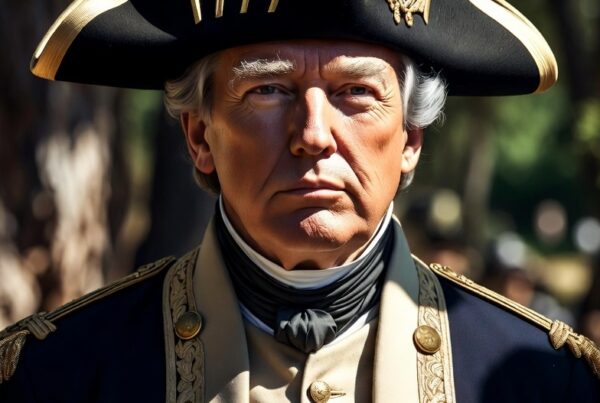The concept of a panacea has always fascinated me, the idea that there is a relatively simple cure-all for a complex set of problems. Panaceas do have mass appeal. Isn’t it comforting to think that there is a simple way to solve complex problems? – But history has proven that panaceas seldom live up to their expectations. We know that politicians characteristically use false premises to convince a trusting public that a problem has reached such a critical stage and drastic measures are essential in order to alleviate it. The gravity of the targeted problem is exaggerated; the over-simplified solution rarely resolves it, and unintended negative consequences frequently result.
Throughout history, long before politicians, it was common for people to take drastic actions based on beliefs in fanciful panaceas. One of the earliest, and most bizarre panaceas was the belief in a Fountain of Youth. It was thought that drinking from this miraculous fountain would not only heal illness but also prevent the aging process. Of course, not everyone believed in the powers of the mythic elixir vitae, but there were zealous adventurers – including Alexander the Great, who hunted in vain for this wondrous fountain that would stave off death and ensure eternal youth.
A Twentieth Century example of a false premise and a failed panacea is the disastrous Prohibition experiment. The premise was put forth that banning alcohol would solve many of society’s problems including the plague of imprudent men who abused alcohol and abandoned family and societal obligations. Temperance organizations demanded that “demon rum” be banned in order create a “sober and pure world.” When our government outlawed the sale of alcohol, Evangelist Billy Sunday passionately proclaimed: “The slums will soon be a memory. We will turn our prisons into factories and our jails into storehouses and corn-cribs.”
We all know that it didn’t turn out that way. Under Prohibition, societal conditions got worse instead of better. The enormous profits from supplying illegal alcohol ushered in organized crime and bootlegging on a grand scale. And, although Prohibition was repealed after roughly a dozen years, its horrendous consequences lingered for decades. Not everyone was abusing alcohol, so problems could have been addressed with less drastic measures. In fact, two years after Prohibition ended, Alcoholics Anonymous was formed, a voluntary organization that did help reduce drinking.
Prohibition ended in the 1930s, but the establishment’s faith in social cure-alls is as strong as ever. In the 1970s, the peculiar phenomenon known as political correctness began to emerge. Those promoting this false premise tried to convince the public that a society could be created wherein no one would see or hear anything that might “hurt their feelings” or “lower their self-esteem.” Like the ancients who were taken in by tales of a Fountain of Youth, some Americans actually believed that a Politically Correct Utopia was feasible. Without the manipulative electronic media’s mass communications, it is doubtful that the public could have been hoodwinked by such a pie-in-the-sky concept.
Unfortunately, before the public began to grasp that Political Correctness was based on exaggerations and falsehoods, PC had spawned innumerable far-fetched ventures that were taken to ridiculous extremes. One example being the escalating and ludicrous demonstrations by college students to cleanse campuses of entrenched white male privilege, that they claim is creating a hostile environment for blacks and females. The demonstrators’ demands for changes are not only extreme but non-negotiable. Regrettably, the naivete of these immature students could be found in some of their professors as well, and many American colleges are infused with an unbridled politically correct philosophy. The combination of juvenile demonstrators and professors who haven’t fully matured does not bode well for the future of higher education.
One special PC project currently in vogue is the eradication of Southern heritage. Black activists maintain that reminders of Southern heritage are not only hurtful to them but also curtail the self-esteem of their race. Minstrel shows, wherein blackface performers portrayed blacks as buffoonish and happy-go-lucky, lazily singing, dancing, and playing musical instruments also lowered black self-esteem, but these shows were eventually eliminated. Since they served no purpose other than entertainment, their elimination was not widely contested. But “Southern Culture” has different meanings for different people. Those who view it as an honored heritage are just as plentiful as those who claim it represents racial hatred. So its PC elimination involves pacifying one side while rejecting the other.
As we would expect, the Leftist media heartily supports those who claim that the Confederate flag represents hatred directed at blacks, even though opinion polls indicate that the majority of Americans believe that it represents heritage. The majority’s favorable opinion of the flag has remained fairly consistent over the years despite media’s histrionic attempts to vilify it. – As bizarre as it may sound, the trashing of Southern heritage has gotten so out of hand, that a city council voted to have the graves of a Confederate officer and his wife exhumed and removed from a city park! It is doubtful that the desecration of the final resting places of the Southern dead will ameliorate the complaints of minorities. None of the ongoing Leftist cleansing campaigns have satiated them. And, if we’ve reached the point where the defilement of burial plots is now considered necessary, eradication of Southern heritage has certainly gone too far.
We’ve learned from experience not to expect logic from the Left, nor the minorities that it describes as “helpless victims.” For too long these so-called “helpless victims” have been given full reign to determine how a societal symbol will be interpreted. They have even coerced the removal of symbols that they characterize as invidious. Leftists and minorities initially maintained that they only opposed displays of Confederate memorabilia at government sites. But in a sub-Rosa action, subtle pressure forced Wal-Mart, Amazon, and other retailers to discontinue selling Confederate-related merchandise to private individuals.
Another preposterous illustration of the attempts to delete Southern heritage is the Southern Poverty Law Center’s massive data-gathering project, “Erasing Hate.” This project involves the creation of a comprehensive map pinpointing the locations of all Confederate tributes and memorials on public places throughout the country. The SPLC is seeking input from public informers to help identify these sites, as they are so numerous and in out-of-the-way places in smaller towns. The SPLC actually maintains that a local memorial honoring soldiers who lost their lives during the War Between the States represents hate. After identifying these memorials and all other “hate” sites the SPLC will strive to have them demolished, one at a time.
As the accumulation and verification of data for such a massive undertaking seems almost unachievable, we wonder if the SPLC is serious about this inquisition or, as usual, just seeking media attention, hoping to attract contributions. Like the fossilized NAACP, the SPLC is desperately trying to prove that it continues to have relevance. Although these two organizations might have some credibility with the Leftist media, their public support has been in decline for years. Other than monotonous “publicity-seeking” attacks on the historic Old South, neither organization has accomplished anything worthwhile in years.
The campaign to eradicate Southern heritage was boosted when a mentally ill youth shot several black parishioners in a Charleston, South Carolina church. As a Confederate flag can be seen in photographs of the young man, social psychologists and self-anointed experts predictably wasted no time in claiming that the Confederate flag caused the shooting. The same photographs also featured flags of apartheid racist regimes in Africa but the Confederate flag was singled out as the reason for the violence. On the one hand, the experts maintained that mental problems might not necessarily cause such acts of violence, because most mentally ill persons are unlikely to murder anyone. Contrariwise, these same self-proclaimed clinicians maintained that the Confederate flag might incite an individual to commit homicide.
Although polls indicate that a large number of blacks disapprove of the Confederate flag, polls also show that the majority of blacks are opposed to a cleansing of everything related to Southern heritage. In fact, influential blacks have begun to speak out against demands for the flag’s removal. A typical example are comments from civil rights icon and former Atlanta mayor, Andrew Young. Speaking of the black community, Young said: “The problems we face don’t have anything to do with the flag …The challenge for us is not to wipe out our past history but to learn to live together in the future.”
Although its too soon to call Andrew Young’s comments a trend, quite a few blacks are realizing that the energy spent erasing the past could be better spent addressing more pressing problems. Also, the public no longer blindly accepts racial accusations made by black malcontents; they simply do not hold up under scrutiny. Southern as well as Northern blacks are beginning to reject adversarial racial attitudes , realizing that both races must get along with each other in view of the potentially disastrous national problems that are emerging.
Social movements do not last indefinitely, they gradually phase out. Now that the Leftist media is struggling to garner public support for more political correctness, their campaign to eradicate Southern heritage seems less sustainable. Obviously, media will continue to stereotype Southerners, normally employing variations of bigoted, doltish hillbillies, pot-bellied drawling sheriffs, robed KKK marchers, and hoop skirted Southern belles. So Southerners must defend their culture with vigor but in ways that are not susceptible to caricature by the national media.






